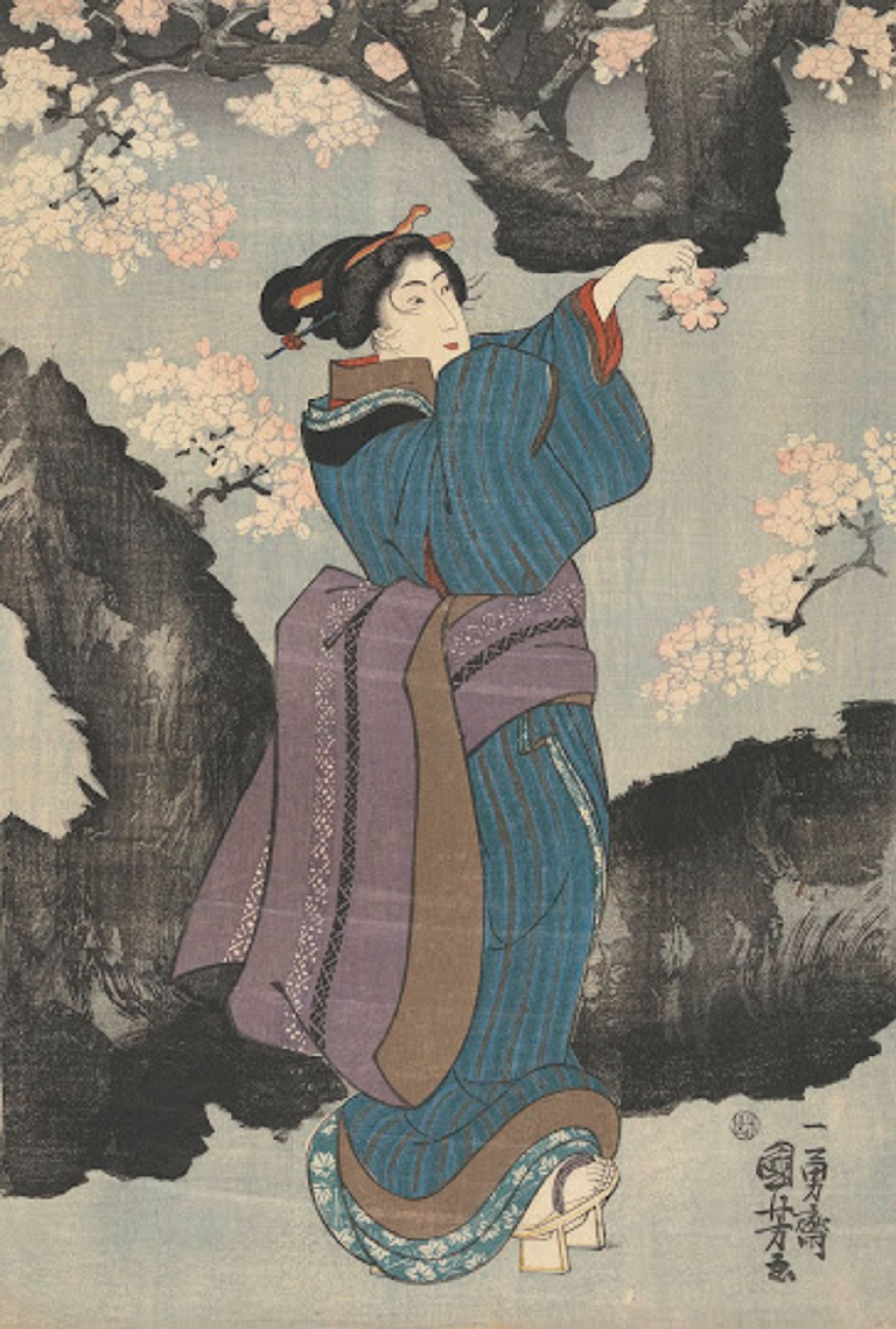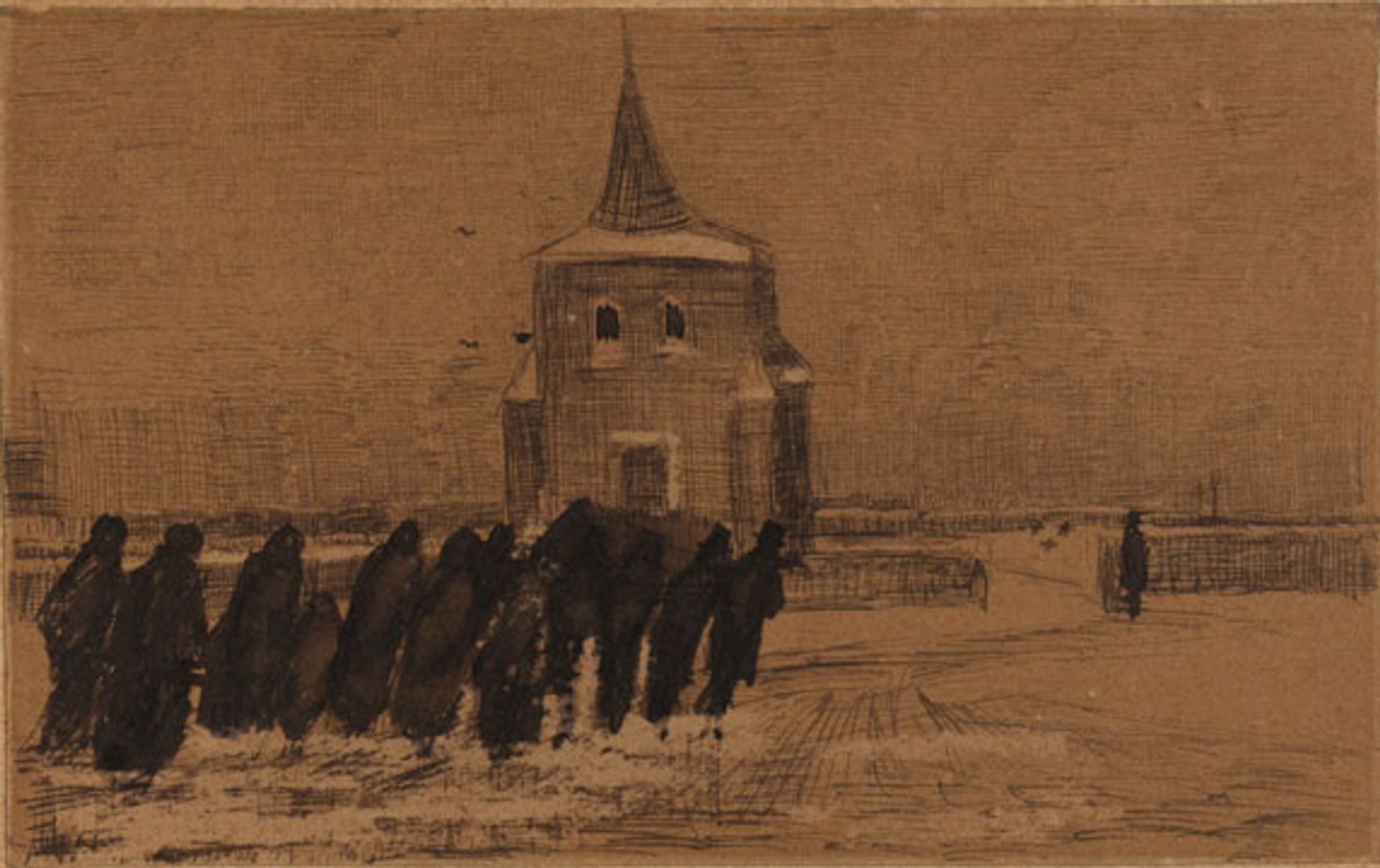Van Gogh landscape coming up for auction should fetch a record price of over $100m
Van Gogh #VanGogh

Van Gogh’s Orchard with Cypresses (Verger avec cyprès) (April 1888), which is to be offered by Christie’s in New York on 9 November, has no formal estimate, but the auction house expects it will go for more than $100m.
This would be a record price for a Van Gogh. The most expensive work by the artist ever sold at auction was Portrait of Dr Paul Gachet (June 1890), which went for $83m, but that was back in 1990—and prices have risen considerably since then. It is now secreted in a mysterious private collection. The second highest price was $81m, for the landscape Labourer in a Field (September 1889), sold in 2017.
Orchard with Cypresses (April 1888) comes from the estate of Paul Allen, the co-founder of Microsoft along with Bill Gates. Allen, who died in 2018, was an extremely wealthy philanthropist and collector. Christie’s is billing the sale as “the largest and most exceptional art auction in history”, estimated to fetch over $1bn.
A few weeks after Vincent’s arrival in the south of France he was greeted with the exhilarating sight of blossoming fruit trees on the outskirts of Arles. On 3 April 1888 he wrote to his brother Theo: “I’m in a fury of work as the trees are in blossom and I wanted to do a Provence orchard of tremendous gaiety.”
Two days later he asked for more art supplies: “For Christ’s sake get the paint to me without delay.” His order was enormous: 107 tubes of paint and ten metres of canvas.
Vincent explained the urgency: “The season of orchards in blossom is so short, and you know these subjects are among the ones that cheer everyone up.” For him, blossoms represented a symbol of rebirth. Embarking on his new life in the south of France, he was full of enthusiasm for what lay ahead.
By the end of April, Van Gogh had completed 14 surviving canvasses of blossom, only five of which remain in private hands.
In these paintings, his passion for Japanese prints shines through, reflecting their love of blossoms, which are a reminder of the transience of life. A typical example that was in Van Gogh’s print collection was Woman Picking Cherry Blossoms (around 1846) by Utagawa Kuniyoshi, one of his favourite artists.

Utagawa Kuniyoshi’s Woman Picking Cherry Blossoms, from the triptych Cherry Blossoms by Night (around 1846) Credit: Van Gogh Museum, Amsterdam (Vincent van Gogh Foundation)
Orchard with Cypresses depicts two mature peach trees and three smaller fruit trees, a reed wicker fence and pear trees beyond, with a row of cypresses planted as a windbreak against the powerful mistral.
This was the first time that Van Gogh had painted cypress trees, a motif that would play a key role in the paintings he did the following year after moving to the asylum in Saint-Rémy-de-Provence. These would include his now famed Starry Night (June 1889), with its soaring trees.
In Orchard with Cypresses, Van Gogh employed a pointillist style, with stippling or speckled dots. He worked quickly, using thick impasto paint to catch the sparkling light and springtime colour—creating a scene redolent with freshness and immediacy.
Vincent explained the technique to his artist friend Emile Bernard: “I hit the canvas with irregular strokes which I leave as they are, impastos, uncovered spots of canvas.”

Van Gogh’s Orchard bordered by Cypresses (April 1888) Credit: Kröller-Müller Museum, Otterlo
Several other landscapes were done from almost the same spot. Orchard bordered by Cypresses (April 1888, now in the Kröller-Müller Museum, Otterlo) shows a scene more towards the right. The small tree in front of the wicker fence appears in both canvases. Interestingly, the technique is different, although they were probably painted within a day or so of each other, with the Kröller-Müller canvas lacking the strong stippling of the Christie’s painting.
Van Gogh originally envisaged Orchard with Cypresses and Orchard bordered by Cypresses as the wings of a triptych, with another vertical blossom scene to be hung in the centre. Although quickly dropping this idea, he continued to think of the two horizontal canvases as pendants, or a pair.
Pink Peach Trees (March 1888, also in the Kröller-Müller Museum) depicts the two mature trees that appear in the Christie’s painting. Van Gogh set up his easel a metre or two away for the vertical Pink Peach Trees, slightly changing the angle from which the trunks were painted.

Van Gogh’s Pink Peach Trees (Souvenir de Mauve) (March 1888) and Christian Mourier-Petersen’s Peach Trees in Bloom: Arles (March 1888) Credit: Kröller-Müller Museum, Otterlo and Hirschsprung Collection, Copenhagen
While painting on this spot, Van Gogh was for part of the time accompanied by a Danish artist friend, Christian Mourier-Petersen, who was also working in Arles. In Peach Trees in Bloom: Arles, the Danish artist worked to the right of Van Gogh, since he has shown more space between the two mature trees.
The Christie’s canvas Orchard with Cypresses came to America in 1928 and in the 1930s it was acquired by the New York heiress Joan Whitney Payson, who later bought Van Gogh’s magnificent Irises (May 1889, now at the J. Paul Getty Museum, Los Angeles). The orchard scene was purchased by Allen in 1998.
His painting has only been exhibited twice in the past 30 years. In 2008 it was displayed at Seattle’s Experience Music Project. Now known as the Museum of Pop Culture, this might seem an unusual place for a Van Gogh masterpiece, but the venue had been established by Allen. In 2010, he lent the landscape to the Van Gogh show at London’s Royal Academy of Arts.
Orchard with Cypresses will go on display at Christie’s in New York on 29 October, a few days before the 9 November auction.
Other Van Gogh news:
• A Van Gogh exhibition opened in Rome this week. Van Gogh: Masterpieces from the Kröller-Müller Museum is at the 17th-century Palazzo Bonaparte (until 26 March 2023). Curated by Maria Teresa Benedetti and Francesca Villanti, the show includes 26 paintings and 14 works on paper from the museum in Otterlo, in the east of the Netherlands.

Van Gogh’s Burial in Nuenen in Winter (1883)
• Bavaria’s Staatliche Graphische Sammlung in Munich has acquired an early Van Gogh drawing, with financial assistance from the Ernst von Siemens Kunststiftung. Burial in Nuenen in Winter dates from December 1883, when Vincent was living in his parent’s village, in the south of the Netherlands. It depicts a line of mourners outside the tower of the old church and the cemetery. The ink drawing had been owned by generations of the same Munich family since 1901.